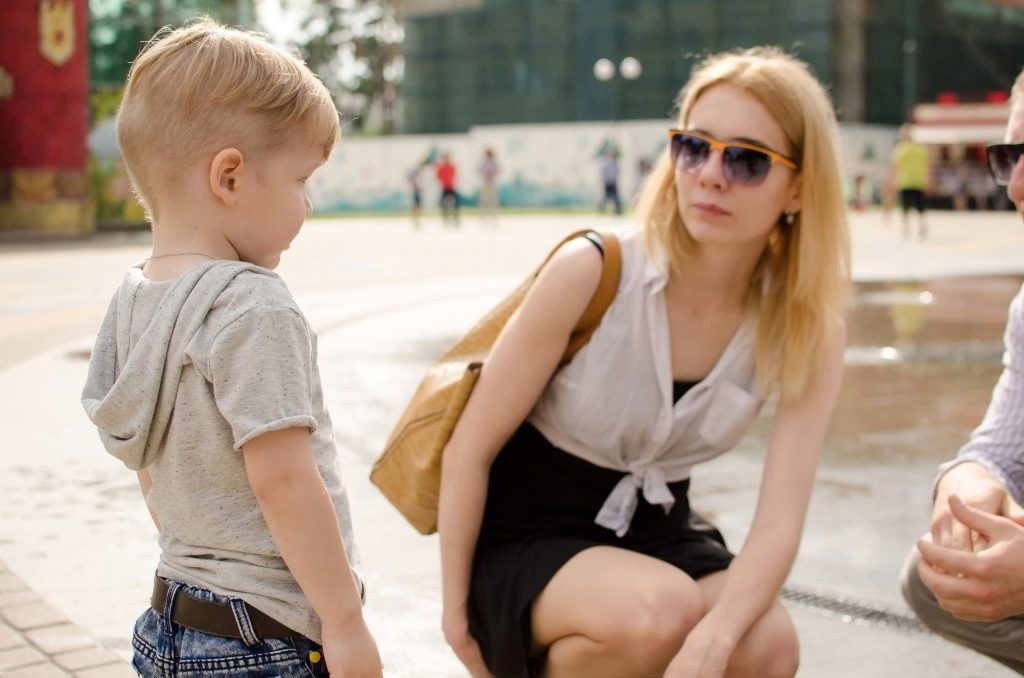Most parents are told to discipline privately, but sometimes, public correction is exactly what’s needed. We’re often taught to shield kids from embarrassment and handle misbehavior in private. While that’s a respectful approach in many cases, there are times when addressing behavior in the moment—right where it happens—is more impactful. Public discipline doesn’t have to mean public shaming. When done calmly and with intention, it sets boundaries, reinforces respect, and teaches kids that expectations don’t disappear just because they’re out in the world. Here are six situations where disciplining in public is not only appropriate—it’s necessary.
1. When They’re Being Disrespectful to Others
If your child is rude to a waiter, a cashier, or another adult in a public space, it’s important to step in immediately. Ignoring it or waiting until later sends the message that poor behavior is acceptable if no one reacts. A firm but straightforward correction like, “We speak kindly to people who are helping us,” sets the tone and keeps the situation from escalating. It also shows others that you’re engaged and teaching your child respectful behavior. Public moments call for public accountability, especially when another person is affected.
2. When Safety Is at Risk
If your child runs away from you in a parking lot, climbs on store displays, or ignores clear safety rules, waiting to discipline later can be dangerous. These moments require instant correction so your child understands the seriousness of their actions. A sharp “Stop!” or direct consequence—like leaving the store—reinforces boundaries without delay. Public or not, safety trumps discomfort. Discipline in these situations isn’t about control—it’s about protection.
3. When It’s a Repeated Behavior
If your child is doing something you’ve already addressed privately—like whining loudly in a store or roughhousing at the park—it’s okay to correct them in the moment. They’ve already been told the rule. At that point, a gentle but public reminder shows that consistency matters, no matter the setting. Kids must know that boundaries don’t change just because you’re not at home. When discipline is respectful and measured, it’s more about reinforcing values than punishing behavior.
4. When It’s a Learning Moment for Everyone
Some public missteps can be turned into teachable moments—not just for your child, but for siblings or peers watching. For example, if your child pushes another kid in line or snatches a toy, correcting the behavior with a calm explanation models emotional regulation and accountability. “We don’t push people to get what we want. Let’s try asking politely instead.” These real-world moments can leave lasting impressions when handled constructively. Other kids learn from what they see—and so does your child.
5. When They’re Testing Boundaries in Front of Others
Sometimes, kids misbehave publicly just to see if you’ll follow through on what you’ve said before. If you’ve warned them about a consequence—like losing screen time or sitting out of an activity—it’s important to follow through, even if it’s inconvenient. Consistency builds trust and teaches that your words matter, regardless of the audience. Public discipline in this case helps prevent future power struggles. Children who see that rules apply everywhere are more likely to respect them.
6. When Ignoring the Behavior Enables It
There are moments when ignoring behavior feels easier than causing a scene, but that silence can actually make things worse. If your child is making fun of someone, using inappropriate language, or acting out for attention, stepping in quickly is essential. Letting it slide because it’s uncomfortable in public tells your child the behavior is okay as long as no one speaks up. Calmly addressing it with a simple, clear consequence shows strength, not shame. Silence may avoid a scene, but it won’t teach a lesson.
Public Discipline Doesn’t Have to Mean Public Shame
The goal isn’t to humiliate your child—it’s to teach them that respect, responsibility, and safety matter in every setting. Disciplining in public can feel awkward initially, but when done with calm and care, it shows your child (and the world) that you’re parenting purposefully. The key is to stay composed, focus on the behavior—not the audience—and avoid overreacting. When your child knows that expectations follow them wherever they go, they learn how to carry those lessons into every corner of life. After all, real-world behavior calls for real-time guidance.
Have you ever had to discipline your child in public? What worked—and what didn’t? Share your experiences in the comments!
Read More:
8 Things Kids Do to Hide Their Bad Behavior from You
From Chaos to Calm: Strategies for Difficult Toddler Behavior
Catherine is a tech-savvy writer who has focused on the personal finance space for more than eight years. She has a Bachelor’s in Information Technology and enjoys showcasing how tech can simplify everyday personal finance tasks like budgeting, spending tracking, and planning for the future. Additionally, she’s explored the ins and outs of the world of side hustles and loves to share what she’s learned along the way. When she’s not working, you can find her relaxing at home in the Pacific Northwest with her two cats or enjoying a cup of coffee at her neighborhood cafe.

Leave a Reply